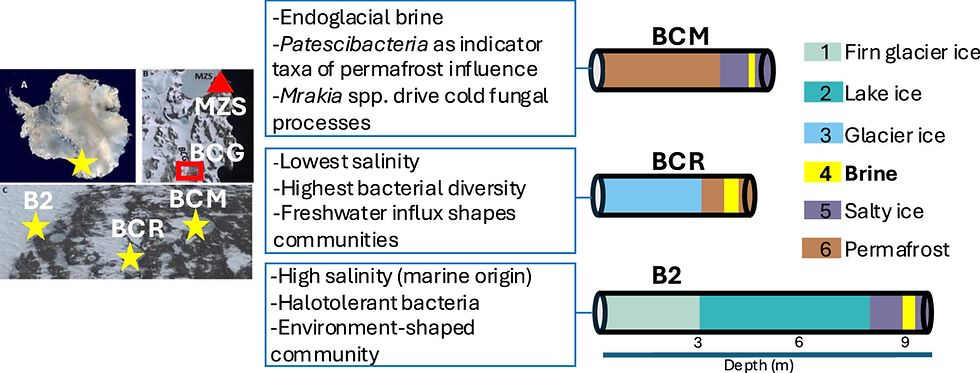Influence of electromagnetic fields on the circadian rhythm: Implications for human health and disea
- David Ojcius
- Jan 19, 2023
- 4 min read
• The earth’s natural electromagnetic fields influence the circadian rhythm in humans.
•
Sunspots and seasonal weakening of the geomagnetic field can affect human health.
•
Seasonal geomagnetic field weakening increases infectious and chronic diseases.
•
Electromagnetic pollution from wireless devices can also affect circadian rhythms.
•
Grounding and reduction of electromagnetic pollution can produce health benefits.
Abstract
Living organisms have evolved within the natural electromagnetic fields of the earth which comprise atmospheric electricity, Schumann resonances and the geomagnetic field. Research suggests that the circadian rhythm, which controls several physiological functions in the human body, can be influenced by light but also by the earth’s electromagnetic fields. Cyclic solar disturbances, including sunspots and seasonal weakening of the geomagnetic field, can affect human health, possibly by disrupting the circadian rhythm and downstream physiological functions. Severe disruption of the circadian rhythm increases inflammation which can induce fatigue, fever and flu-like symptoms in a fraction of the population and worsen existing symptoms in old and diseased individuals, leading to periodic spikes of infectious and chronic diseases. Possible mechanisms underlying sensing of the earth’s electromagnetic fields involve entrainment, light-dependent radical pair formation in retina cryptochromes, and paramagnetic magnetite nanoparticles. Factors such as electromagnetic pollution from wireless devices and antennas, shielding by non-conductive materials used in shoes and buildings, and local geomagnetic anomalies may also affect sensing of the earth’s electromagnetic fields by the human body and contribute to circadian rhythm disruption and disease development.
Introduction
Many ancestral traditions have promoted the view that the cosmos can influence life on earth. Taoists for instance consider that an invisible influence from the cosmos somehow affects some everyday occurrences. This subtle energy, often called Qi, is said to flow in and around the human body, and to vary with seasons and other cyclic solar and lunar processes. Taoists practice various activities such as Qigong, meditation, breathing exercises, acupuncture, and grounding in order to harmonize the body with this cosmic influence and promote health, vitality and longevity.
In the 1920s, Russian scientist Alexander Chizhevsky was among the first to observe that biological rhythms are entrained with the sun and earth [1]. Chizhevsky observed that high solar activity, as measured by the number of sunspots which reflect the sun’s magnetic activity, was associated with social unrest, cardiovascular mortality, mental illnesses, and variations in crop production [1]. These periods of sunspot maxima occurred every 11 years according to the Schwabe cycle, which is due to periodic inversion of the sun’s magnetic poles. Aleksandr Presman developed these ideas further and proposed that the electromagnetic field of the earth provides biological information required for the growth, healing and optimal functioning of living organisms [2].
With the initial absence of a plausible mechanism and the difficulty in reproducing some early observations, these claims were initially dismissed and even today few people are aware of this field of research. However, a large body of evidence now indicates that biological organisms can sense small variations in the earth’s electromagnetic fields and that solar disturbances can affect human health [[3], [4], [5], [6], [7]]. For instance, bacteria, honey bees, sea turtles, lobsters, monarch butterflies and migrating birds use the geomagnetic field as compass for direction [6], whereas humans may use the geomagnetic field as a Zeitgeber to entrain the circadian rhythm [3, 5]. We review here the possible mechanisms underlying these effects and their potential impact on human health.
Effects of solar disturbances on human health
Following the work of Chizhevsky, various studies were performed to examine the effects of the sun on human health (reviewed recently in [7]). For instance, data from 6.3 million diagnoses made following a request for an ambulance in Moscow during three years of high solar activity (1979–1981) showed that 85,819 myocardial infarctions were linked in time with solar storms [8]. Over a period of 29 years, high solar activity in Minnesota was associated with reduced heart rate variability (HRV) and a 5% increase in cardiovascular mortality, compared with years of quiet solar activity [9]. Similarly, a large-scale case-crossover study involving data from Australia, France, New Zealand, Sweden and the United Kingdom concluded that solar storms were associated with a 19% increase in strokes [10].
Solar activity not only affects disease development, but also physiological functions in healthy individuals. For instance, astronauts in space showed a 30% reduction in HRV during a geomagnetic storm [11]. Hormones also show a cyclic variation that correlate with the sunspot cycle. Thus, in a man who collected urine for 15 years, it was possible to observe a statistically significant cyclic variation in the amount of 17-ketosteroids that matched the number of sunspots during that period [12]. Solar storms reduce melatonin levels by affecting enzymes required for its biosynthesis in the pineal gland and retina [13].
The British epidemiologist Robert Edgar Hope-Simpson expanded these findings when he observed that influenza pandemics were cyclic and coincided with periods of high sunspots [14]. It would later be shown that major human pandemics attributed to pathogenic bacteria, viruses or parasites occurred during periods of low or high sunspots [15] [Fig. 1]. Notably, the Covid-19 pandemic started during a sunspot minimum [Fig. 1], suggesting that electromagnetic factors may be involved. While some researchers proposed that sunspots and solar radiation may induce pandemics by increasing mutations that enhance microbial pathogenicity [15], the observation that sunspot minima and maxima are also associated with the development of several non-infectious diseases [7] indicates instead that the reason for the association may be due to disruption of host physiological functions during these periods, possibly via disturbances of the circadian rhythm and immune function.
Read more at:
https://www.sciencedirect.com/science/article/pii/S2319417023000033








Comments